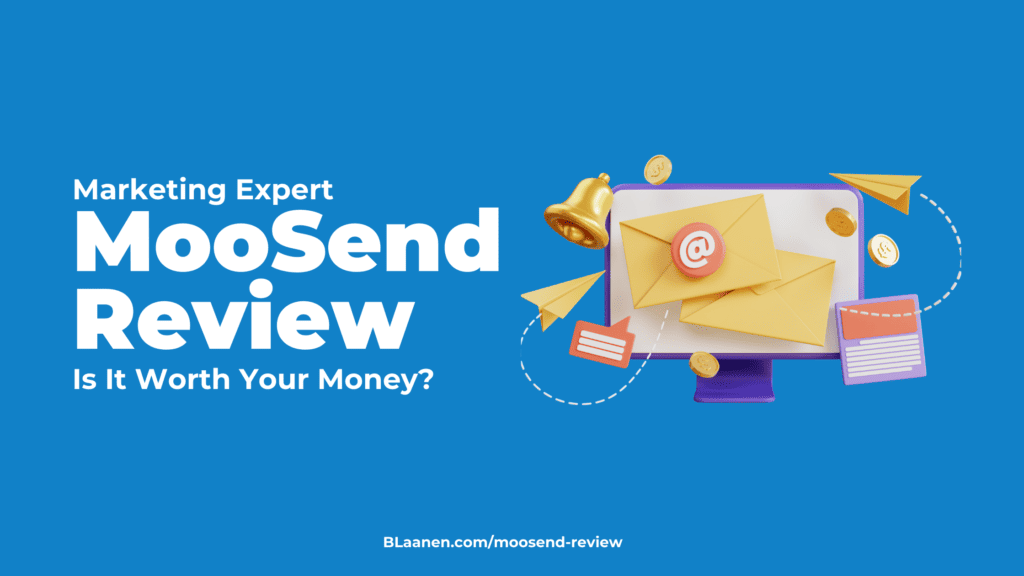The 5 Ps of marketing can be used as a framework to keep focus while you grow your business. Each of the 5 Ps are levers to build and optimize a successful marketing strategy.
When it comes to running a small business or a marketing team as a growth manager, it’s easy to get overwhelmed. There are so many things to do, and it can be tough to keep the focus on what’s important. I have struggled with this tremendously in the past, between managing clients and this blog.
But with the 5 Ps of Marketing, it’s easier to onboard clients and focuses on the right marketing strategies for each of them.
By using them as a framework for your marketing decisions, you can keep your business focused and competitive.
In this blog post, we’ll discuss each of the 5Ps and how you can use them in your own business. Let’s get started!
Table of Contents
ToggleWhat are the 5 Ps of Marketing?
The marketing mix is a set of tools that marketing professionals use to develop and achieve their business objectives. The 5 Ps of marketing are people, product, price, place, and promotion.
- People refers to the target audience that a business is trying to reach. It is important to understand the needs and wants of this group of people in order to create a product that they will want to buy.
- Product refers to the goods or services that a business offers. This can include everything from the product or service itself to the packaging and branding, quality, functionality, and guarantees offered.
- Pricing decisions must be carefully considered in order to make the product affordable for the target audience while still making a profit for the business.
- Place refers to the distribution channels through which a product is sold. Businesses must decide where to sell their products in order to reach their target market. They also need to ensure that their products are available when and where customers want them.
- Promotion refers to the marketing activities that are used to raise awareness of a product and generate sales. This can include advertising, public relations, and discounts.

How do the 5 P’s of Marketing fit together?
Now that we know what the 5 Ps are, how do they fit together?
I always like to start with People, and tie that into the remaining 4 Ps. Here’s how:
By understanding the needs and wants of target customers (people), creating products or services that meet those needs (product), pricing the products or services competitively (price), making the products or services available where customers want to buy them (place), and promoting the products or services to customers through marketing communications (promotion), businesses can stay competitive and position themselves for success.
Of course, there’s more to each of these elements. Let’s take them one by one to clarify how to use them when developing marketing campaigns.
Suggestion: Get familiar with Best marketing tools for small business if you own a small business or a startup.
People – Define your target market and how to reach them

People are the core of your target audience
In my opinion, People are the most important part of your marketing strategy. They are your customers, after all. Defining your target audience is crucial to understanding who you need to reach with your marketing messages.
Don’t just guess the problem your product will solve for your customers. Take the time to research and define their pain points and desires to craft product features and messaging that speak directly to them.
What you need to learn about your customer:
- Their pain points: When you look at user-generated content related to your product or service, what are they complaining about?
- Their desires: People don’t buy products, they buy what they think the product will make them feel or accomplish. Look for the exact words your potential customers use to describe what they want.
- Their common beliefs: What themes recur specifically for your audience? What public personalities resonate with them? What obstacles do they believe are in their path to success?
- Where they hang out: Where can you reach them with your marketing channels? Do they spend more time on Facebook, Reddit, TikTok, or offline altogether? Knowing this is critical to the focus of your marketing efforts.
Use all of the above to define your messaging, and influence the other 4 Ps and to create loyal customers. After all, entire companies are succeed just on narrowing down their target audience and serving them precisely.
If you want your marketing strategy to be successful, make sure you invest the time and effort into market research and defining your target audience. It will pay off in the long run.
People are also your company and employees.
Don’t think of people just as your customers.
People also refer to the service your company provides in the form of the sales and service experience. It’s also how your employees are portrayed and the attitude with which they approach your customers.
Keep this in mind when developing your business and marketing plan. To approach business strategically, you must consider who is representing your company, and how you want them to treat customers.
After all, every business wants high customer satisfaction levels. So align your employees or marketing freelancers towards that goal!
Product – what are you selling and why should people buy
Now that you know what your customer wants and needs, you can use that information to:
- Build a product or service that solves your customer’s problem.
- Improve your product or service by adding features or functionality that better helps them meet more of their needs.
- Create the quality and packaging that will most appeal to your audience.
Simply said, by knowing your audience, you can cater to their desires to satisfy customers, acquire new customers, grow your market share, and build a great customer experience.
When it comes to your product, focus your attention on how you can best meet customer needs and you’ll be on your way to boosting your bottom line.

Price – how do you set prices and what factors influence them
The price element is important because it’s one of the easiest ways to differentiate your product from others. Especially in a crowded marketplace, you can set your advertised price higher or lower than your competitors, and you can also offer different payment arrangements (e.g. installment plans, discounts for paying in cash, etc.).
This includes understanding what they are willing to pay for your product or service.
By catering to customer needs, you can create a loyal following of customers who are happy to pay for what you’re offering. In turn, this will help to improve your bottom line and grow your business and market coverage.
Price Positioning in the Market
You’ll also want to consider how your product is positioned in the market. Positioning will influence your pricing strategy, as well as the way you promote and place your product.
How you position your product in the market can have a significant impact on your pricing strategy and the way you promote it.
For example, are you selling a luxury item or a commodity? If you’re selling a commodity item, you may want to consider lowering your price in order to be more competitive.
However, if you’re selling a luxury item, you may be able to get away with higher prices since this is often associated with quality.
You’ll also want to consider what your product costs to produce and ship. There’s no use in setting a low price if you’re barely making a profit or, worse, losing money on each sale.
Promotion – how do you reach your audience and where do you sell your products
Promotion is an integral part of the marketing mix and choosing the right marketing channels is essential to success. A good marketing strategy will focus on building brand awareness and meeting purchase intent where their customers actually are.
For example, there is no point in advertising on TV if your customers only stream and skip all the ads. Instead, focus on placing your ad or content in front of them when they are most likely to be receptive. This could mean working with their favorite influencers or getting your content on their preferred blogs, websites, or social channels.
If you’re not assured what to do then read: Content Marketing For Small Businesses
Again, the only way to know how to reach your customer is by doing the work to figure out where they actually are. That goes back to the first P: people.
Consider any of the following for your promotion channels:
- Social media marketing
- Paid Digital Marketing, such as Facebook, Google, or TikTok Ads.
- Direct Marketing
- TV or Radio Ads
When done correctly, promotion can be powerful tool for driving sales and growth. Just remember to focus on meeting your customers where they are.
You may want to check: 7 Best Online Digital Marketing Courses
Place – Delivering the product to your customer
I’ve already hammered in about promoting to your new customers by connecting to the place of where they are at. Place, or distribution, is the process of making your product available to your customers.
If you have a physical product, this means ensuring that your product is available in the right stores in theright quantities. If you have a digital product, this means making sure that your website is accessible and easy to use.
In either case, distribution is a critical part of your business’s success. By ensuring that your product is available where and when your customers want it, you can increase sales and build customer loyalty. With effective distribution in place, you can take your business to the next level.
FAQs about the 5 Ps of Marketing
How to use the 5 P’s of Marketing?
The 5 Ps of Marketing is a framework to help you set the course in your marketing plan, and adjust as you learn more about your product, target audience, and business.
For example, if you are struggling to close sales, you might want to examine the price of your products or the people you have in charge of your sales departments.
Or, if you aren’t receiving great reviews about your new products or services, maybe it’s time to look deeper into your product lines and see if they are targeting the right place.
If starting from scratch, start by researching and defining your target audience.
What are other examples of the 5 P’s?
Freemium model: start with a free product to validate the product, people and place, and then upsell (promotion) at a premium price with additional features.
Niche Market: Creating a niche product or service has a focus on using the product to meet the needs of a certain people or target audience. From there, the niche product can be used to differentiate from the competition.
Why are the 5 P’s important?
The 5 P’s of marketing are important for marketers because they help to define and focus on core marketing goals and grow revenue. Used together, the 5 P’s can provide a framework for developing an effective marketing mix.
Each “P” represents a different area of focus that should be considered when planning and implementing marketing activities.
They also help inform which marketing strategies and channels to use, to get the most out of your marketing efforts. Instead of focusing on an extended marketing mix, marketers can focus on a more limited set of options to get the most effective market coverage.
What do the 5 P’s stand for?
The 5 P’s of marketing stand for: Product, Place, Price, Promotion, and People. Each of these represents an important aspect of marketing that should be considered when trying to launch or improve a product or service.
Who invented the 5 Ps of marketing?
The 5P’s of marketing were developed by the American marketing professor Edmund Jerome. This approach focuses on problems facing marketers rather than focusing on marketing in its functional aspects. The McCarthy model helped marketers better understand sociology and psychology and helped improve campaigns.
A marketing mix refers to five aspects: products, prices, promotions, location, and people.
Wrap up and summarize the 5 Ps of Marketing
The 5 Ps of Marketing is a framework to help small business owners and marketing managers better understand how to market their products. It outlines the steps necessary to create a successful marketing plan, including researching and defining the target audience, choosing the right promotional channels, and making sure the product is available where and when customers want it.
By thinking about business through the framework of the 5 Ps, businesses can focus on their key marketing elements to increase sales and build customer loyalty.
We hope this blog was helpful in explaining the basics of the framework.




